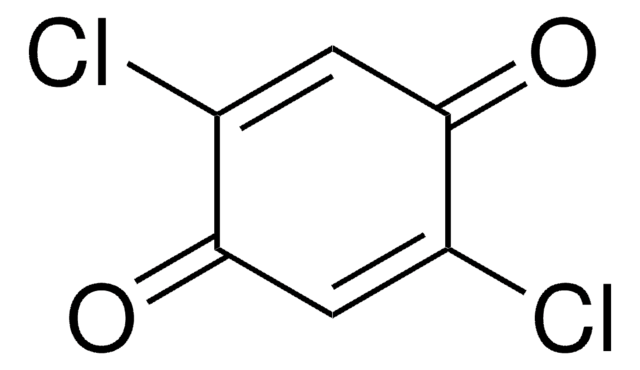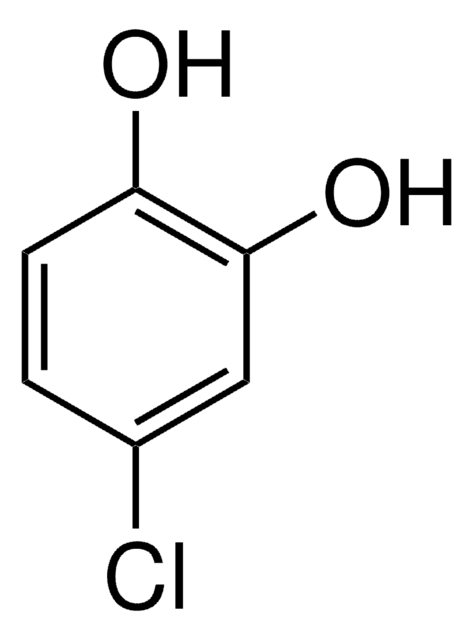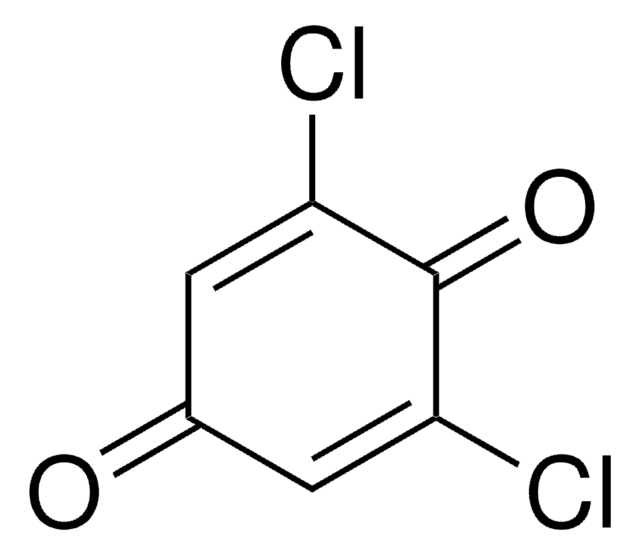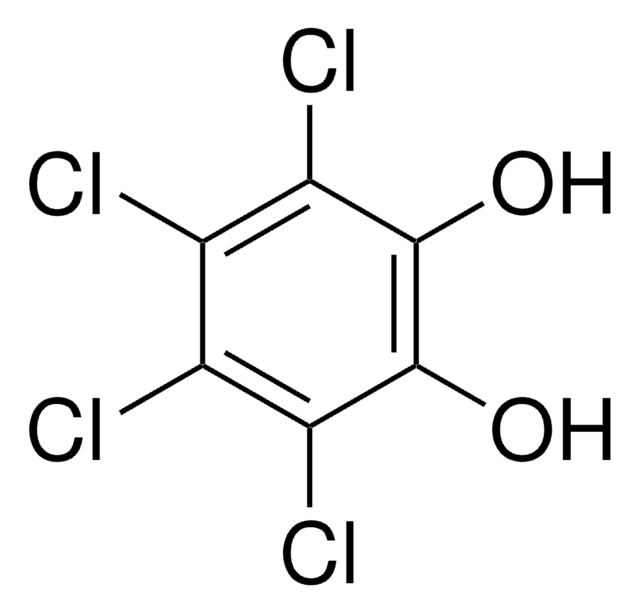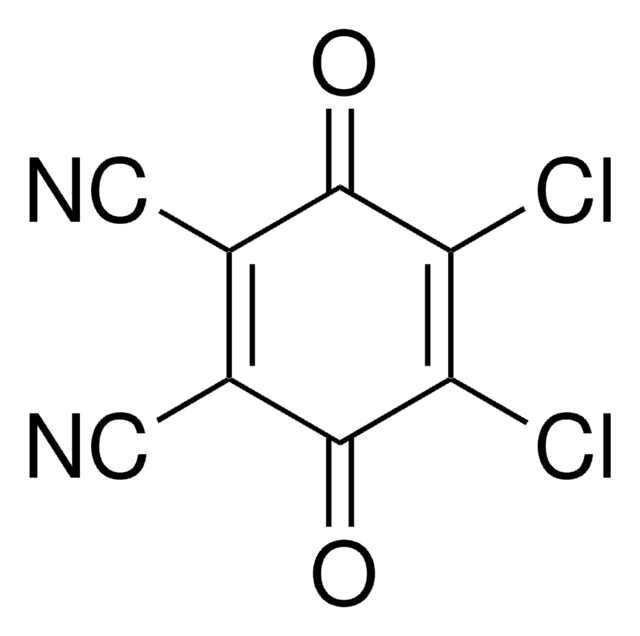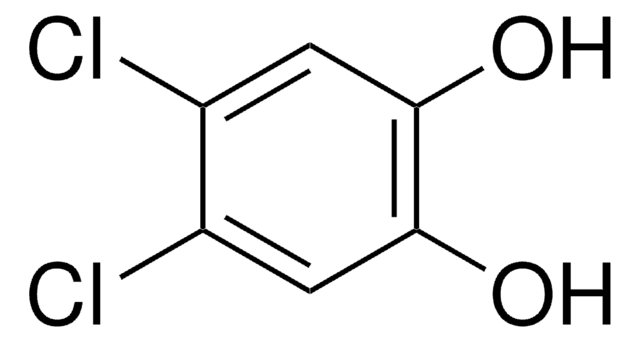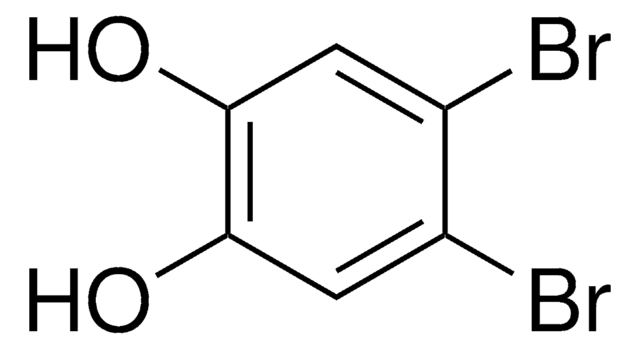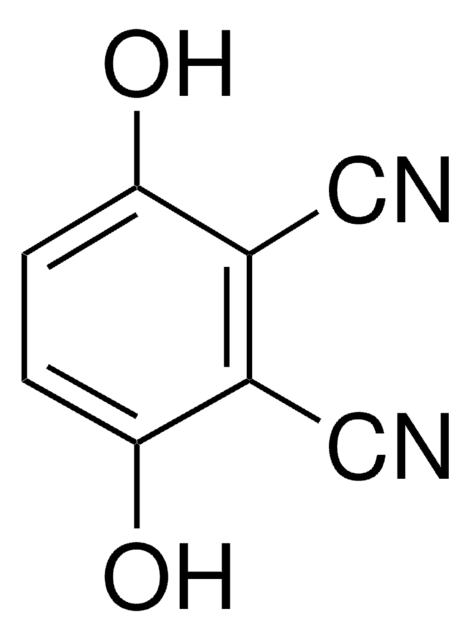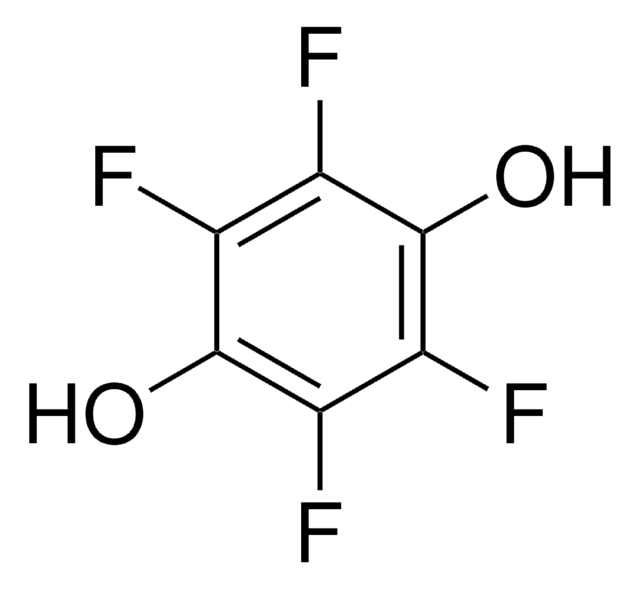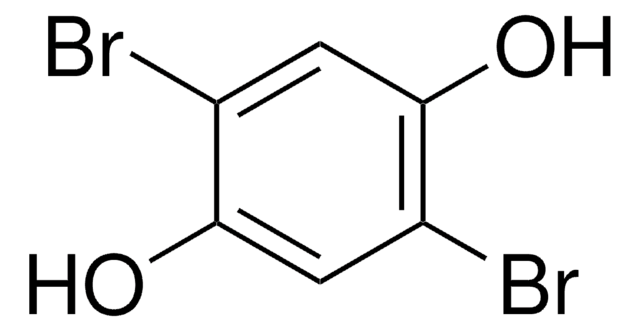推荐产品
质量水平
方案
98%
mp
168-171 °C (lit.)
SMILES字符串
Oc1cc(Cl)c(O)cc1Cl
InChI
1S/C6H4Cl2O2/c7-3-1-5(9)4(8)2-6(3)10/h1-2,9-10H
InChI key
AYNPIRVEWMUJDE-UHFFFAOYSA-N
一般描述
2,5-Dichlorohydroquinone (2,5-DCHQ) is a hydroquinone derivative that can be synthesized by reducing 2,5-dichloroquinone using sodium dithionite (Na2S2O4). The kinetics of the reaction of 2,5-DCHQ and N-phenyl-1,4-benzoquinonemonoimine has been studied. The transformation of 2,5-DCHQ to 2-chloromaleylacetate using PcpA (Pcp = pentachlorophenol) protein, isolated from Escherichia coli has been investigated. It is reported to be the degradation product of 2,4,5-trichlorophenoxyacetic acid and γ-hexachlorocyclohexane.
警示用语:
Danger
危险声明
危险分类
Eye Dam. 1 - Skin Corr. 1B
储存分类代码
8A - Combustible corrosive hazardous materials
WGK
WGK 3
闪点(°F)
Not applicable
闪点(°C)
Not applicable
个人防护装备
Eyeshields, Faceshields, Gloves, type P3 (EN 143) respirator cartridges
法规信息
新产品
K Miyauchi et al.
Journal of bacteriology, 180(6), 1354-1359 (1998-03-27)
Sphingomonas (formerly Pseudomonas) paucimobilis UT26 utilizes gamma-hexachlorocyclohexane (gamma-HCH), a halogenated organic insecticide, as a sole carbon and energy source. In a previous study, we showed that gamma-HCH is degraded to 2,5-dichlorohydroquinone (2,5-DCHQ) (Y. Nagata, R. Ohtomo, K. Miyauchi, M. Fukuda
Michael C Pirrung et al.
The Journal of organic chemistry, 67(23), 7919-7926 (2002-11-09)
Two total syntheses of the unsymmetrical bis-indolylquinone natural product demethylasterriquinone B1 (also known as L-783,281) have been accomplished. The first exploits a known base-promoted condensation of indoles with bromanil, which stops at monoaddition using the sterically hindered 2-isoprenylindole. This permits
Rate constants of elementary steps of the reversible chain reaction of N-phenyl-1,4-benzoquinonemonoimine with 2,5-dichlorohydroquinone.
Antonov AV and Varlamov VT
Russian Chemical Bulletin, 56(5), 883-889 (2007)
Y Ohtsubo et al.
FEBS letters, 459(3), 395-398 (1999-10-20)
The pentachlorophenol (PCP) mineralizing bacterium Sphingomonas chlorophenolica ATCC39723 degrades PCP via 2,6-dichlorohydroquinone (2,6-DCHQ). The pathway converting PCP to 2,6-DCHQ has been established previously; however, the pathway beyond 2,6-DCHQ is not clear, although it has been suggested that a PcpA plays
U Juhl et al.
Free radical research communications, 11(6), 295-305 (1991-01-01)
The industrial pollutant 2,4,5-trichlorophenol (2,4,5-TCP) was metabolized with postmitochondrial liver fraction from Aroclor-1254 induced rats. The generated metabolites induced single strand breaks in PM2 DNA. Among the metabolites produced are the 3,4,6-trichlorocatechol (TCC) and the 2,5-dichlorohydro-quinone (DCH), whereby the induction
我们的科学家团队拥有各种研究领域经验,包括生命科学、材料科学、化学合成、色谱、分析及许多其他领域.
联系技术服务部门